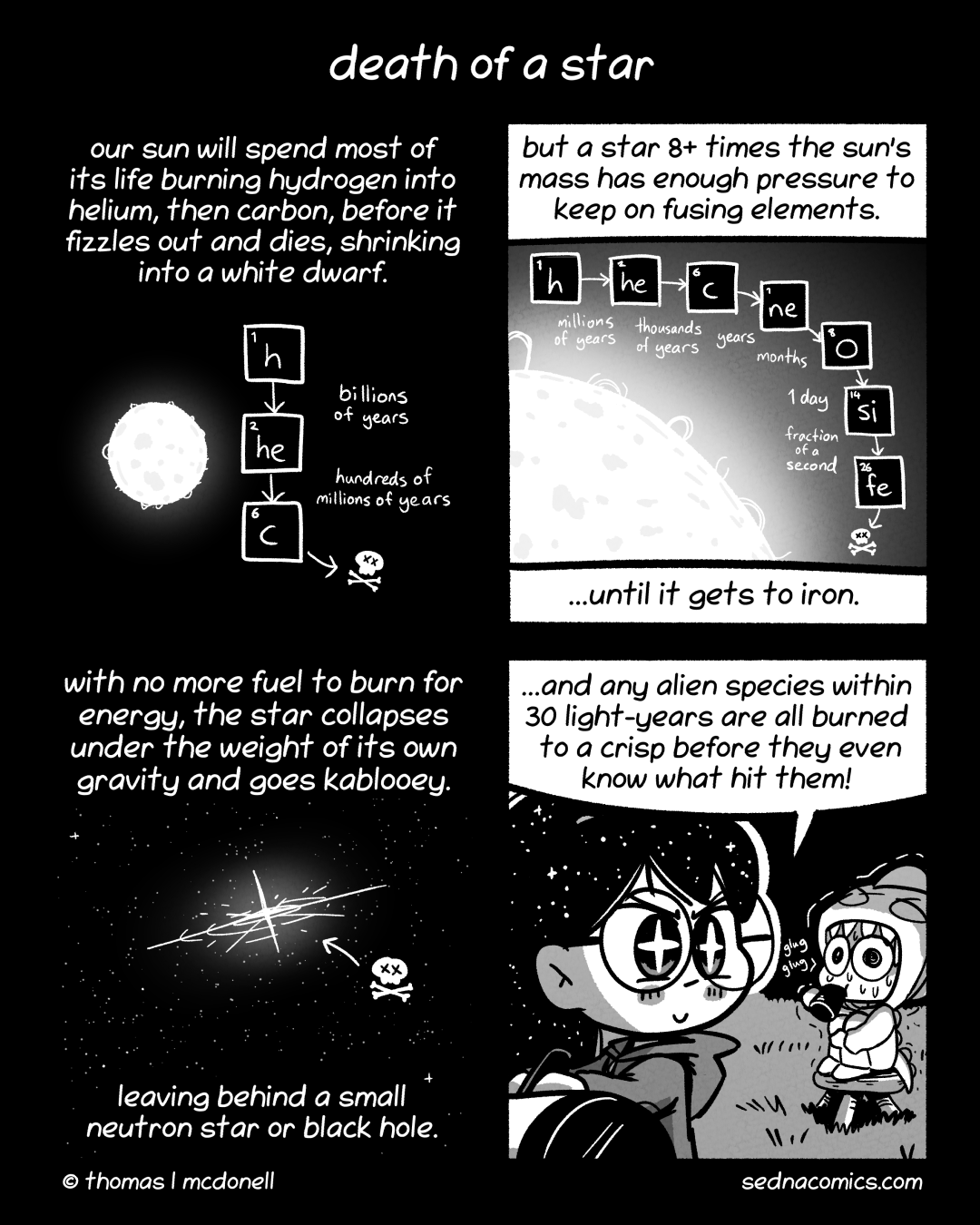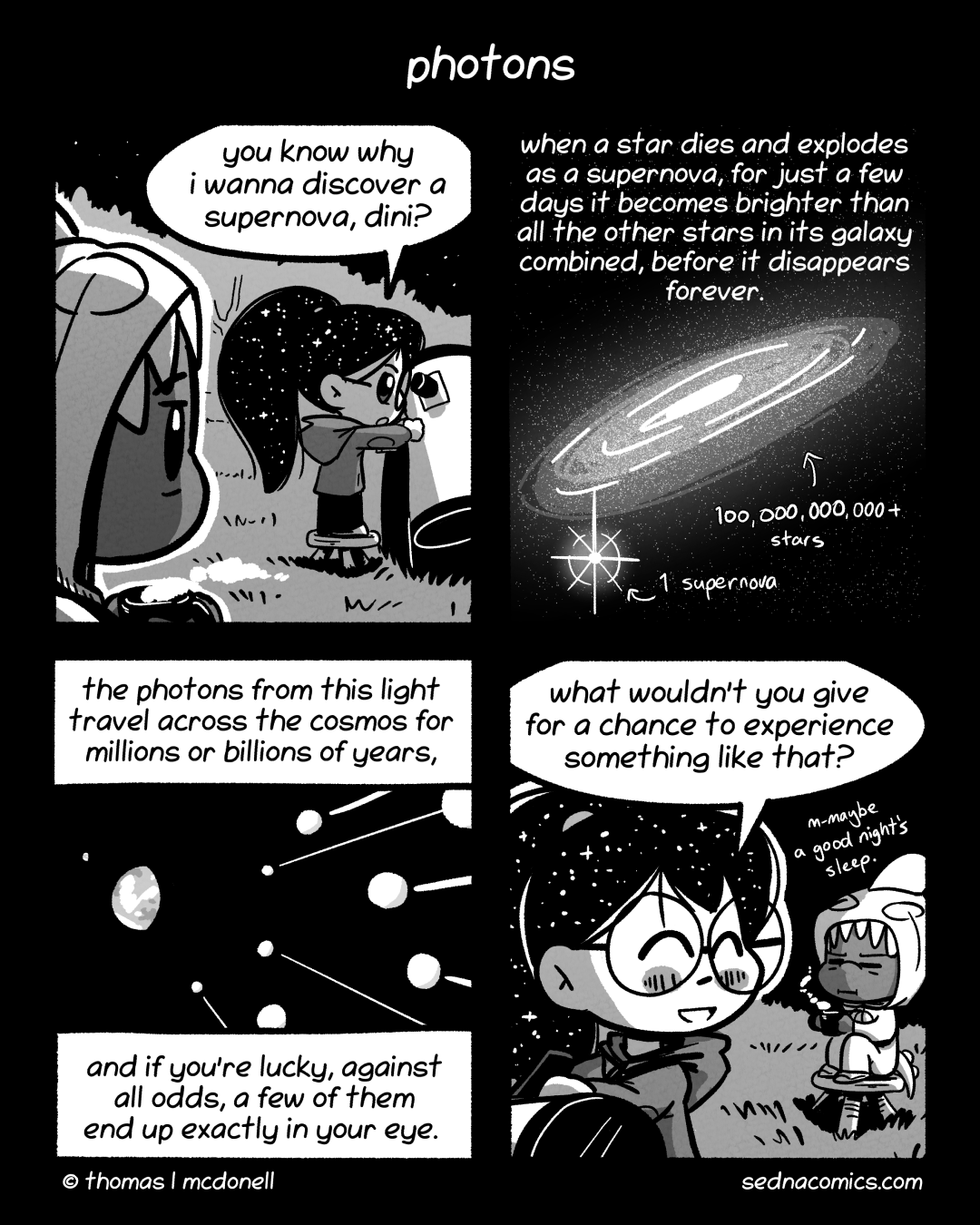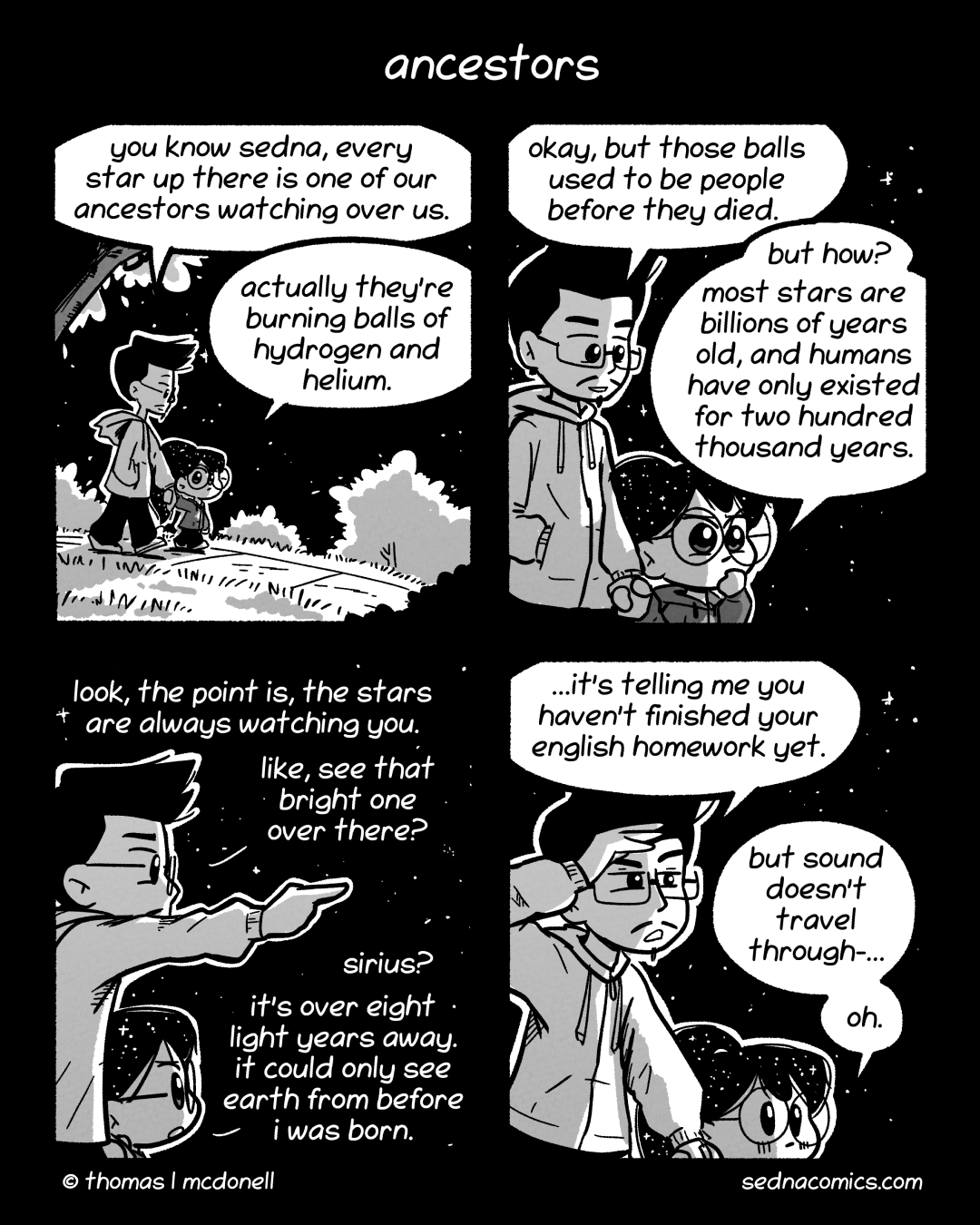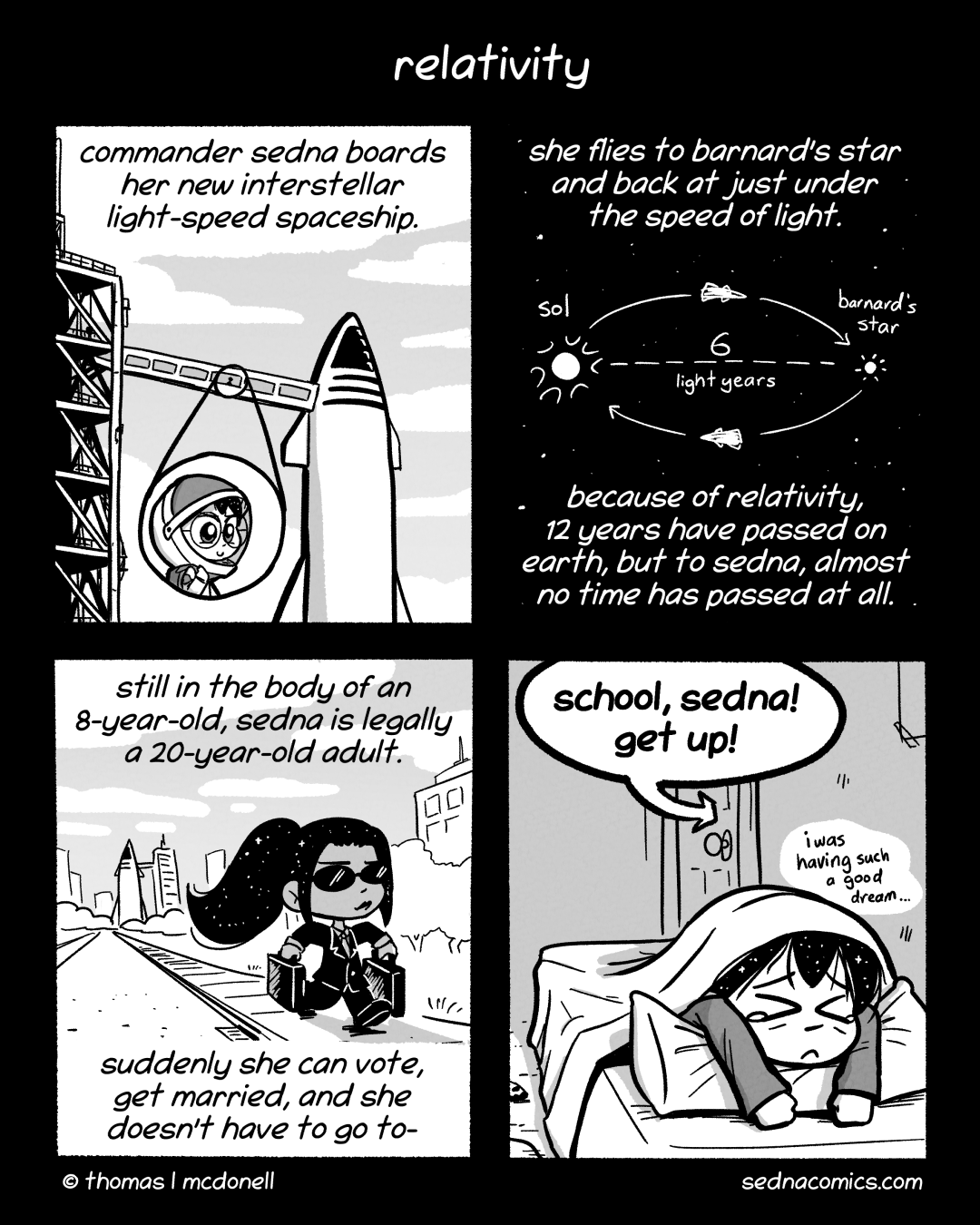obviously this is a much more complex and interesting subject than i could possibly squeeze into a four panel comic, so i highly recommend you go watch the episode of ‘crash course astronomy’ on youtube about high mass stars.
also in case you thought i made a mistake with the timeline, no, a smaller star actually lasts much much longer than a larger star, as it’s much cooler and thus burns its fuel slower. while the largest stars we know of (hypergiants) last only millions of years, the smallest stars (red dwarfs) can last for trillions of years. seriously. trillions with a t.
i’ll probably do a comic about this some day, so i should shut up now before i spoil it.




